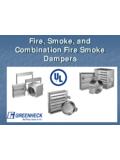Transcription of COMBINATION AFCIs: WHAT THEY WILL AND WILL NOT DO
1 Copyright 2012 IEEE (Presented at the 19th Annual IEEE IAS Electrical Safety Workshop, Daytona Beach, Jan/Feb 2012) This material is posted here with permission of the IEEE. Internal or personal use of this material is permitted. However, permission to reprint/republish this material for advertising or promotional purposes or for creating new collective works for resale or redistribution must be obtained from the IEEE by writing to By choosing to view this document, you agree to all provisions of the copyright laws protecting it.
2 COMBINATION AFCIs: WHAT THEY WILL AND WILL NOT DO Copyright Material IEEE Paper No. ESW-XX (do not insert number) Joseph C Engel, PhD Member, IEEE 107 Overlook Circle Monroeville PA 15146 USA Abstract All new home branch circuits are required by Code to be electronically protected, either by Ground Fault Circuit Interrupters (GFCIs) or Arc Fault Circuit Interrupters (AFCIs). Areas including kitchens, bathrooms, garages, etc. must be protected by GFCIs, while living areas must be protected by AFCIs.
3 The AFCI is the fourth generation in residential branch circuit protection after fuses, circuit breakers, and GFCIs. National Electrical Code in 2002 first added AFCI protection, for bedrooms outlets. In 2008, coverage was expanded to all living areas, also adding that only COMBINATION AFCIs are allowed. Manufacturers and UL claim that arcing across a break in a cord s conductor is hazardous, and that a COMBINATION AFCI will respond to prevent a fire. The author believes the claim is unproven, and will explain why the disallowed Branch/feeder AFCI provides more protection at less cost.
4 Index Terms home, electrical safety, ground fault protection, parallel arc, series arc, arc fault circuit interrupter, Branch/feeder AFCI COMBINATION AFCI, CPSC, NEC, UL, NEMA I. INTRODUCTION From 2002 to 2008, manufacturers met the requirement that new home bedrooms be protected with AFCIs by supplying circuit breaker devices that UL calls a Branch/feeder AFCI. These devices provide all the protection of a normal residential miniature circuit breaker, as well as sensitive protection for a parallel arcing fault.
5 While not a UL requirement, every Branch/feeder AFCI manufactured during this period also contained 30mA ground fault protection. As mentioned, since 2008 the NEC Code disallows the use of a Branch/feeder AFCI, allowing only a COMBINATION type AFCI. The author believes the performance features of this device are poorly understood. Some think, erroneously, that the COMBINATION device includes arc fault plus ground fault protection. While the Branch/feeder provides ground fault protection, some COMBINATION devices do not.
6 Others believe, again erroneously, that the COMBINATION adds series arc protection of appliance cords. There is no such test for it in UL1699, the UL Standard for AFCI. A Google search for words {series, arcing, cord, " COMBINATION AFCI"} yields 4500 hits. Clearly most people unfortunately associate series arc protection of cords with the COMBINATION AFCI. The author believes the confusion may come from the four AFCI manufacturers [1],[2],[3],[4], NEMA their trade organization [5], and UL [6] all claiming that a COMBINATION AFCI adds protection against series arcing in cords.
7 Manufacturer X s web reference states: Do Not Confuse " COMBINATION AFCI" with "AFCI/GFCI" One area of potential confusion is with the use of the term " COMBINATION " as associated with AFCIs. A " COMBINATION " AFCI is one that combines the protection for parallel and series arcing into a single device as described above. So while the Branch/feeder provides an important but unadvertised feature of 30mA ground fault, the UL Listed COMBINATION AFCIs claim a feature that is not supported by the associated UL1699 Standard, and is thus unproven.
8 Manufacturer X provides a simple definition of a series arcing event [7]: A series arc is an arcing incident across a break in a conductor. A common example is a cut across one of the two wires in a lamp cord, with a dangerous arc forming in the gap. COMBINATION AFCI circuit breakers detect the arcing condition and turn off the circuit, thus providing the enhanced protection. The author created the described condition in his shop, and tested all commercial COMBINATION AFCIs; none tripped and turned off the circuit.
9 Further, the author used cotton to verify if the arc was a fire hazard. The author could not ignite the cotton. He repeated these tests with a two-conductor heater core carrying 15A with the same results. The preceding explains the author s purpose for writing this paper: COMBINATION AFCIs do not perform as advertised. Also the requirement in NEC 2008 that only COMBINATION AFCIs are allowed is a mistake that the author believes will cost lives. Today there are two types of AFCIs available; the Branch/feeder and the COMBINATION .
10 Their technical performance differences will be described to allow manufacturers, UL, and others to evaluate their support for the COMBINATION AFCI. The author hopes to get industry backing for a proposed revision for NEC 2014 that will remove the mandate that a COMBINATION AFCI be used. Following a review of the performance features of today s AFCIs and the author s proposal for NEC 2014, the bulk of this paper will discuss the history of the AFCI, in the hope that the standard and code-making processes can be improved.





